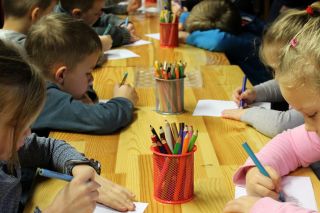Creativity
An Amazing Strategy to Energize Your Creativity
Noting the similarities between random objects energizes our creative output.
Posted April 29, 2024 Reviewed by Michelle Quirk
Key points
- Much of our education is geared toward logical thinking.
- Creative thinking is stimulated when we look for similarities, not differences.
- Observing how things are alike stimulates the imagination and fosters dynamic thinking.
As kids, we were creative dynamos. We built forts to fend off marauding armies, we engaged in imaginary games, and we created monsters, giants, and six-headed aliens from other worlds. Life was full of imagination and wonderful possibilities. Ours was a creative world—a world without limitations or restrictions.
However, for most of our education, we were trained to be logical thinkers; we were taught lots of facts and memorized lots of information. Creative thinkers, on the other hand, bend, mold, alter, and modify those facts to create entirely new thoughts and entirely new opportunities. Creativity is not about “what is” (logical thinking) but, rather, is more focused on “what could be” (creative thinking). It’s pushing past our common knowledge and entering an unrestricted and unbounded territory.

Recently, I came across a most interesting quote: “We teach children to color inside the lines, and then expect adults to think outside the box” (Anonymous). That is to say, our education doesn’t always provide us with the skills necessary to live a creative life. Often, when faced with creative challenges, we default to what we learned in school rather than to innovative thinking.
For example, you may recall lessons in elementary school in which you were asked to note the differences between two similar items. For example, what are some differences between a horse and a sheep? Or, which one of the following doesn’t belong: triangle/square/surface/oval? A lot of our early education (along with “Sesame Street”) focused on the differences between certain facts. There’s nothing wrong with that, except that when we look for differences, the emphasis is typically on logical thinking. On the other hand, when we look for similarities, particularly among random items, the focus shifts to creative thinking.
Here's an example: What are the similarities between a brick and a rubber band? At first glance, that seems to be an impossible task. “There’s nothing similar between those two items,” you might exclaim. But, dig a little deeper and you will begin to see possibilities. For example, here are a few similarities for your consideration:
- Both are made from organic materials.
- Both can have right angles.
- Both can be used to hold things down.
- Both are inexpensive.
- Both are geometric shapes.
- Both can be obtained in a hardware store.
- Both need the letter “b” to make sense.
- Both come in a variety of colors.
By looking for connections between two very dissimilar objects, you are exercising your creative potential. Instead of looking for the obvious (as you were asked to do in school), here you are looking for the less obvious, the less certain, and the less recognizable. This is creativity at its finest.
Exercise 1:
Try to find three to five similarities between some of the following:
- An apple and a bulldozer
- A slipper and a pencil
- A window pane and a shovel
- An oak tree and a fan
- A computer keyboard and a rice patty
- A driveway and a lighthouse
- A piece of coal and an email
- A stapler and a motorcycle
- A billboard and a diamond ring
- A fire hydrant and grilled cheese sandwich
Exercise 2:
Here’s a different approach. Get a pack of 5-by-8-inch index cards, some cellophane tape, and a tall stack of old magazines. Take a pair of scissors and cut out as many pictures as you can. Don’t look for any particular type of picture or photograph; the only restriction is that it must be smaller than the index card. You may want to set a predetermined goal ahead of time—for example, 100 pictures. Afterward, tape each picture to a card and then turn all the cards face down.
Each day randomly select two cards. Turn the cards over and see if you can determine four or five similarities between the two pictures. For example, I recently turned over an illustration of a Mountain Gorilla and a photograph of an old-fashioned dial telephone. Here are some of the similarities generated:
- They both are endangered.
- They both make noise.
- They both are difficult to locate.
- They both have black circles.
- They both have a protruding “belly.”
- They both have carbon components.
How about this one: a photograph of a mouse (the animal) and a picture of a toaster. What are some of the similarities?
- They both have compartments for food.
- They both have a tail.
- They both come in different colors.
- They both generate heat.
- They both work day and night.
Conclusion
According to Steve Jobs, “Creativity is just connecting things.” By focusing on the similarities (rather than differences) between items, you will be exercising your mind to look at the world in a more creative way (“outside the box.”). As I wrote in my soon-to-be-released book, this activity, done every day or so will help you generate creative possibilities quite often unrelated to gorillas, telephones, mice, or toasters. You will be re-training your brain to think like you did as a kid. So, too, will you begin generating creative responses you never knew were possible.
References
Fredericks, Anthony D. Two-Minute Habits: Small Habits, Dynamic Creativity (forthcoming book – Spring 2024).




